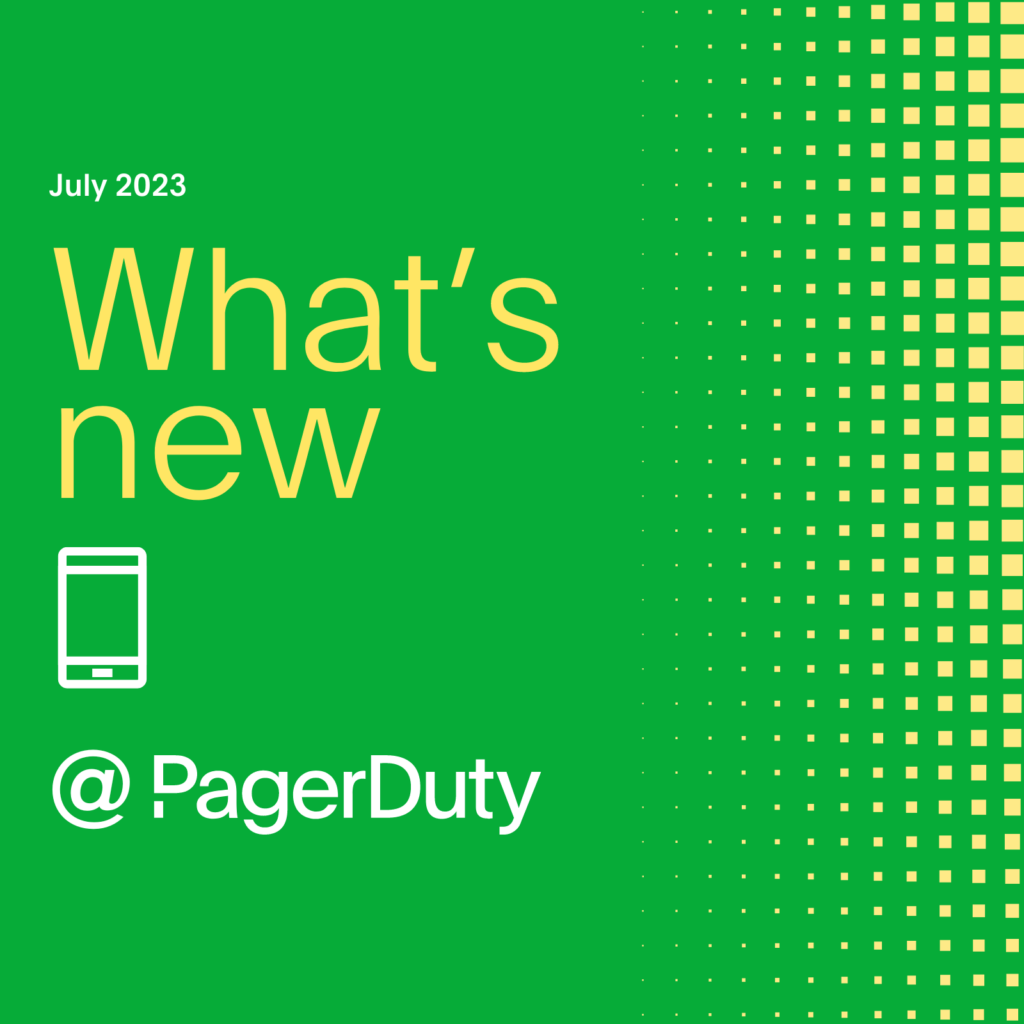The PagerDuty Mobile App: Do More From Anywhere
In a world where everything comes down to moments of truth, teams must respond to issues and opportunities in seconds. Rising customer expectations demand real-time response, and effective DevOps and ITOps shouldn’t just be tied to laptops and desks.
With this in mind, we wanted to work on features that enable you you and your responders to do more from anywhere with the PagerDuty mobile app. Read on for the best mobile incident management innovations we’ve released this year!
For Responders
For technical responders, it’s absolutely essential to rapidly triage issues and take action quickly. During wartime scenarios, the mobile app now live updates so you have real-time context at your fingertips at all times.
If an incident resolves because the server has recovered, you’ll automatically and immediately see the update. This feature includes the powerful, adaptive machine learning PagerDuty supports by automatically grouping related alerts* into a single incident to minimize noise while centralizing important data to provide context.
*Note: Intelligent alert grouping is available for customers with the PagerDuty Event Intelligence product.

The refreshed schedules experience makes it easy to see when you’re on call and is available to all users on all plans. Schedules are great for operations reviews, knowing who is on call next week, and trading shifts. You can directly book overrides for yourself or your teammates with just a few taps. It’s never been easier to view past, present, and future on-call schedules and responsibilities.

“PagerDuty’s mobile app lets our team quickly take action in real time so we are always-on and bringing the world’s football stories to our customers. The new mobile schedules experience helps me know when I’m going on and off call, and see our team’s on-call schedule at a glance—plus my team is happy since it’s never been easier to trade shifts when we need to.” – Tiago Queiroz, OneFootball
Mobile for Incident Response and Major Incidents
For major incident scenarios, we’ve designed the mobile experience with best practices in mind. Now, you can tag an incident’s priority* to classify the severity of incident, helping accelerate triage and awareness across a team around what kind of response is required.
We’ve also made it easy to design the ideal response in peacetime, so anyone can go from triage to orchestrating the ideal, cross-team response, as well as execute tasks and custom logic in third-party systems—all with just a few taps.
Users can easily run response plays,* which provide advanced automation to run multi-stage response scenarios. The functionality supports tasks such as cross-team responder mobilization, status updates/templates to business stakeholders, and more.
*Note: Priority and response plays are available for customers with the PagerDuty Modern Incident Response product.
Additionally, with custom incident actions, you can execute additional tasks, such as creating a ticket in ServiceNow or Jira, running diagnostics, rebooting a server, and much more.

Finally, we’re incredibly excited to share that our mobile apps now also support other capabilities, including tap to dial/join a bridge and tap to join a Slack channel, directly from the incident. This facilitates faster mobilization, leading to faster resolution.

Mobile for Business Stakeholders
Technical incidents tend to have a significant business impact since digital business services are supported by underlying technical services. But for business stakeholders, it’s not helpful to know that the Kafka service is down—instead, they need real-time situational awareness about which business service is affected (e.g., checkout cart service), the impact and scope (how many customers affected, dollars lost per minute, etc.), who’s owning it, and the current status.
Typically, this information lives across different systems or simply doesn’t exist at all, creating a lot of manual work and pain when the clock is ticking. Our newly released PagerDuty Visibility product eliminates this gap by bringing this information into a mobile-first experience.
The mobile business impact dashboard surfaces critical context within the incident, such as real-time business impact metrics, point of contact, incident status, priority, duration, and much more. Critical updates can be automatically shared to business stakeholders. Business impact becomes a shared language through which technical responders and business stakeholders can collectively prioritize and take the right coordinated actions on customer-impacting incidents.
*Note: The business impact dashboard is available for customers with the PagerDuty Visibility product.

This Is Mobile-First Real-Time Operations
In a digital world, real-time operations need to be mobile, work flawlessly, and meet you wherever you are. That’s why we’ve designed PagerDuty to be mobile-first, with a brilliant user experience that puts PagerDuty’s unique intelligence, automation, and best practices in the palm of your hand.
Our mission is to help you and the teams you collaborate with across the organization to easily gain critical insights and take the right action anytime, anywhere. To quickly recap, here’s the list of exciting functionality we covered in this blog:
- Live updating
- Automated alert grouping
- New schedules and overrides experience
- Incident priority
- Advanced response automation (response plays)
- Custom incident actions
- Tap to dial/join a bridge or Slack channel
- Business impact dashboard
There’s much more in the PagerDuty mobile app, and we’re constantly evolving the experience to get you the right insights and tools you need when it matters most. Please share any feedback on how we can continue to make the mobile app better to support@pagerduty.com.
Finally, be sure to stay up-to-date on what’s new for mobile by checking out our mobile incident management page or release notes.

